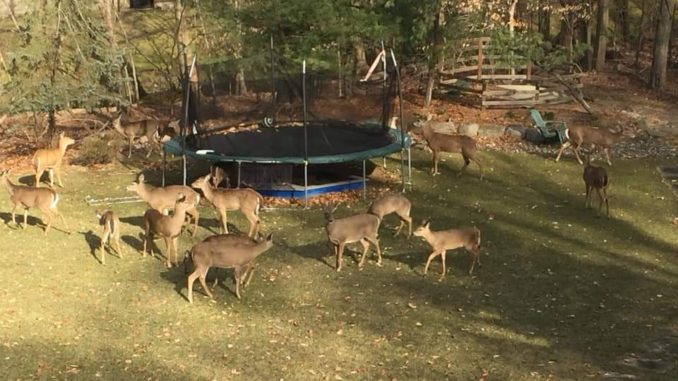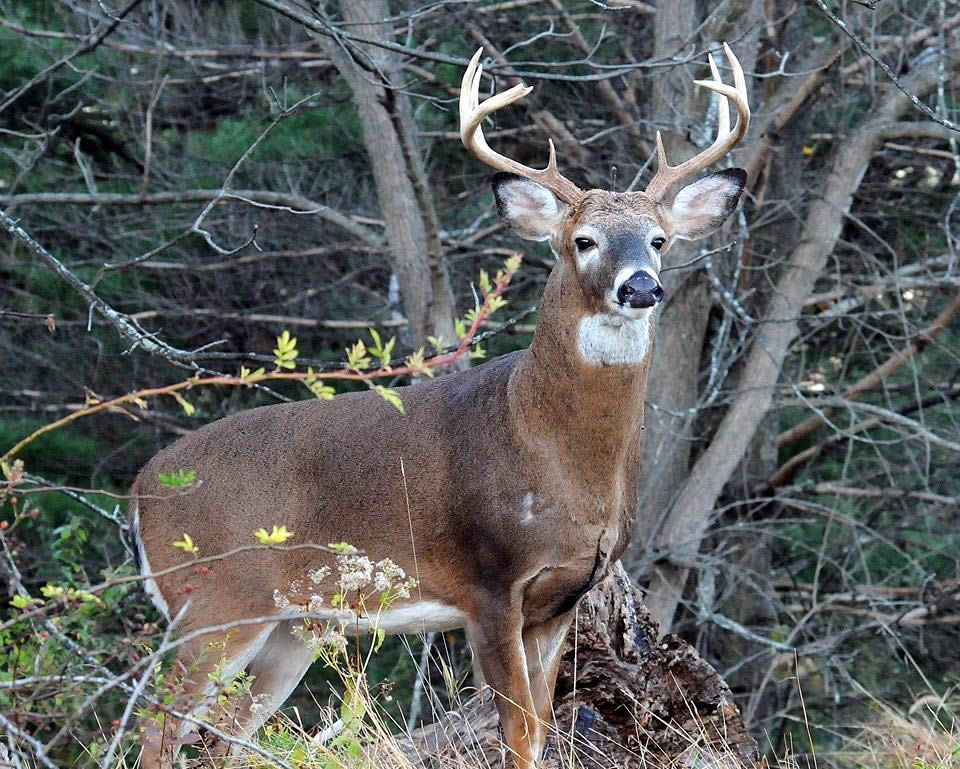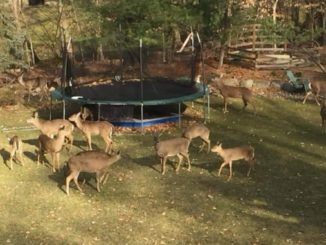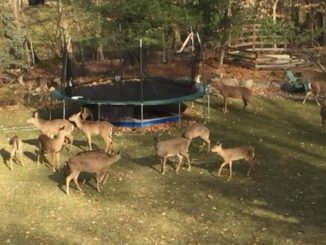
ENGLEWOOD, N.J.—A meeting among public officials to discuss a regional approach to deer management is set for June 5 at Englewood’s Municipal Courtroom—with representatives from lethal and non-lethal approaches to advocate strongly for both positions, although non-lethal advocates plan a protest before the meeting and were limited to 10 minutes to present their case against hunting.
The officials’ meeting is a follow-up to one that Englewood’s Deer Task Force Committee sponsored in December 2018 for the public to hear from state wildlife biologists from the state Department of Environmental Protection Division of Fish and Wildlife.
Called “White-Tailed Deer—Biology, Ecology & Management,” the educational forum spans topics such as deer population management, impacts on forest health and tick-borne diseases, ordinances against feeding wildlife, and safety, laws and possible solutions.
Lisa Wisotsky, chair of the city deer task force, said about 200 people attended the December meeting, mostly residents from nearby Northern Valley towns. The June 5 meeting is exclusively for public officials.
Anti-hunting activists—including the Animal Protection League of New Jersey and The League of Humane Voters of New Jersey—plan to protest outside the public officials’ meeting from 6:15 to 7:15 p.m.—hoping to draw attention to non-lethal methods for deer control, said Kim Nagelhout, an APLNJ member May 28.
Lethal vs. non-lethal
The non-lethal advocates, who were not on the June 5 agenda, were added to the agenda following a recent conversation with the city’s Deer Task Force Committee chair Lisa Wisotsky and Englewood Mayor Michael Wildes.
Nagelhout said they were allowed 10 minutes on the meeting’s agenda starting at 7:15 p.m. but also planned a pre-meeting street protest.
“Mayors need to be aware and hear from the other side. Nonlethal solutions are effective, humane and preferred,” emailed Nagelhout May 28.
The non-lethal advocates allege that the state Division of Fish and Wildlife has a “pro-hunting bias” and manipulates deer populations statewide to benefit hunters, who purchase licenses, which in part fund the division’s activities.
In 2018, Saddle River approved a regulated bow hunt but only after the state Fish & Game Council rejected its proposal to conduct a non-lethal surgical sterilization program.
The state only approves two non-lethal methods—trap and transfer and chemical sterilization—which both have potential negative consequences for deer, agree animal activists.

‘Towns want non-lethal’
“Enough is enough. Towns want nonlethal solutions. Many non-lethal deer control methods have worked throughout the country. These include reducing food sources, scare tactics, birth control, eliminating invasive plants and higher fencing. Factors that influence the number of deer-auto collisions such as lighting, signage, and reduction in speed limits are far more impactful on driver safety than a deer hunt. Densely populated Bergen County should never allow deer hunting, which is also called deer culling. Killing is killing,” emailed Nagelhout.
Following the state’s rejection of Saddle River’s proposed surgical sterilization program in 2018, APLNJ representatives have continually criticized the state agency for not approving the program as well as not approving other non-lethal alternatives to hunting.
Bow hunt: 135 deer killed
The 2018–2019 Saddle River bow hunt killed 135 deer by February 2019, although Borough Administrator Jerry Giaimis said then that the hunt’s effectiveness and whether to conduct another needed council discussion.
The Animal Protection League challenged the hunt in court but failed to stop it. The hunt began in October 2018.
Earlier this year, Fish and Wildlife biologists told River Vale officials that a regulated hunt was the only effective method to reduce local deer numbers there, which have caused an increased incidence of auto–deer collisions.
Following months of listening to both sides—lethal and non-lethal—River Vale’s Township Council agreed unanimously in April to conduct a fall deer bow hunt but recently “paused” moving forward on it to allow residents an opportunity to voice opinions.
River Vale officials are to discuss a drone deer census survey before deciding on next steps, likely in early June.
Officials said a fall ballot question may be offered to residents if council members decide to postpone moving forward on a bow hunt.
In many Pascack and Northern Valley towns, deer population numbers have increased rapidly in the last decade, leading to destruction of native plants and munched landscaping, more auto-deer interactions and accidents, and rising levels of Lyme disease, which may be attributable to increases in deer, in addition to mice and other wildlife and vermin.
River Vale in crosshairs
While a number of Pascack Valley and Northern Valley towns have had presentations from Animal Protection League of New Jersey focused on humane, non-lethal options to manage deer, River Vale Mayor Glen Jasionowski said he has been told by other mayors in nearby towns that they are looking to see what River Vale does to reduce deer numbers, which led to over 50 auto–deer incidents in 2018.
Jasionowski said his biggest fear is a resident will die in an auto-deer collision. At the last council meeting, Jasionowski accused Mark Nagelhout, an APLNJ member, of trying to create “panic” in town with a postcard mailing that was not factual and “done for no other reason but to cause a riot in town.”
The postcard and an APLNJ social media campaign drew at least 60 residents to the May 13 council meeting to oppose a deer bow hunt.
The proposed River Vale bow hunt would only take place on local golf courses and non-residential open spaces.
The June 5 public officials’ meeting highlights a discussion to “develop a regional approach” to deer management, said Wisotsky.
‘Regional approach’ holds key
Many mayors and public officials regularly note that only a “regional approach” will make a difference in reducing deer numbers, and generally decline to take local measures to reduce deer population saying they will have little impact without regional action.
Lethal and non-lethal advocates debate the best way to manage deer populations, although currently the state Fish & Game Council, which must approve local plans, does not approve of surgical deer sterilization—
initially proposed in Saddle River —whereby female deer have ovaries removed in a procedure called ovariectomies.
The estimated cost for such sterilization is $1,000 to $1,200 per deer, said non-lethal advocates, who believe the procedure is effective though costly.
A Cornell University fact sheet on white-tailed deer notes “deer populations will increase if mortality is low and food is abundant and they can double in size every two to three years.
The researchers, Paul D. Curtis and Kristi Sullivan, report that “harvesting female deer is essential to reducing deer numbers and deer damage. In suburban areas where hunting may not be practical, some other form of mortality may be required to stabilize herd growth. Reproductive inhibitors are currently experimental and difficult to apply across areas of several square miles,” report the investigators, who cite five references.



